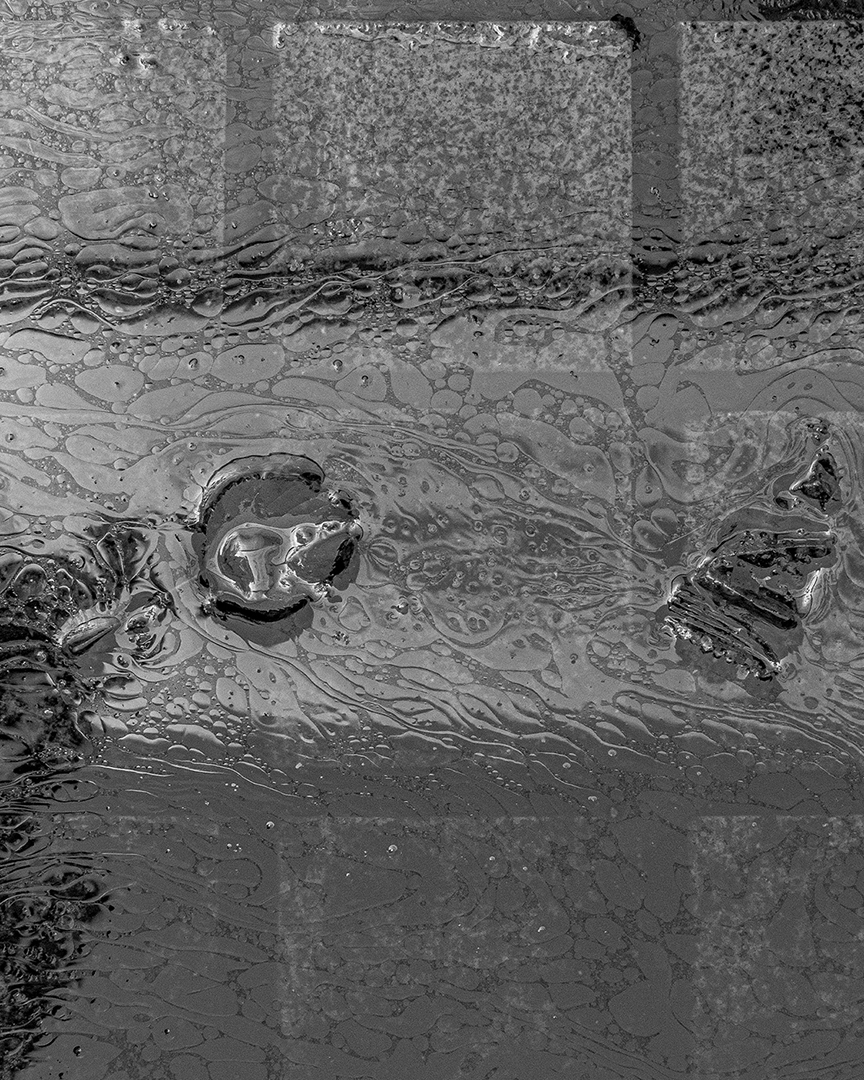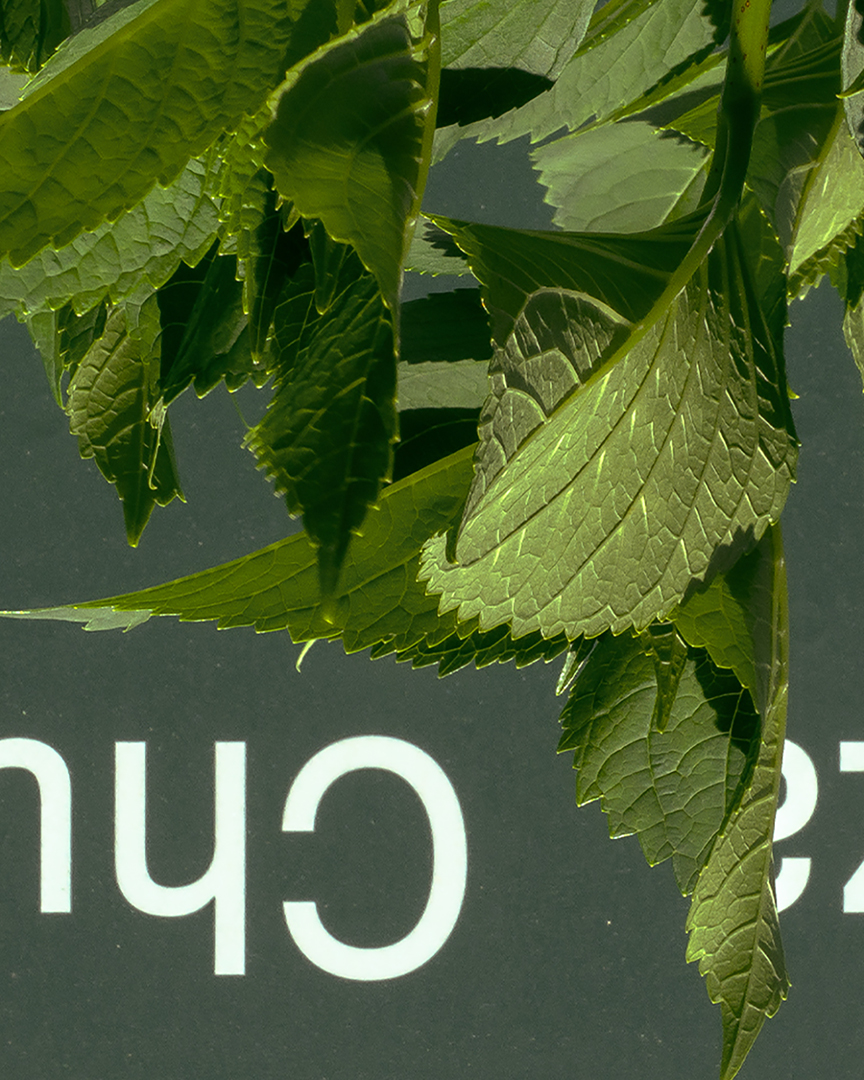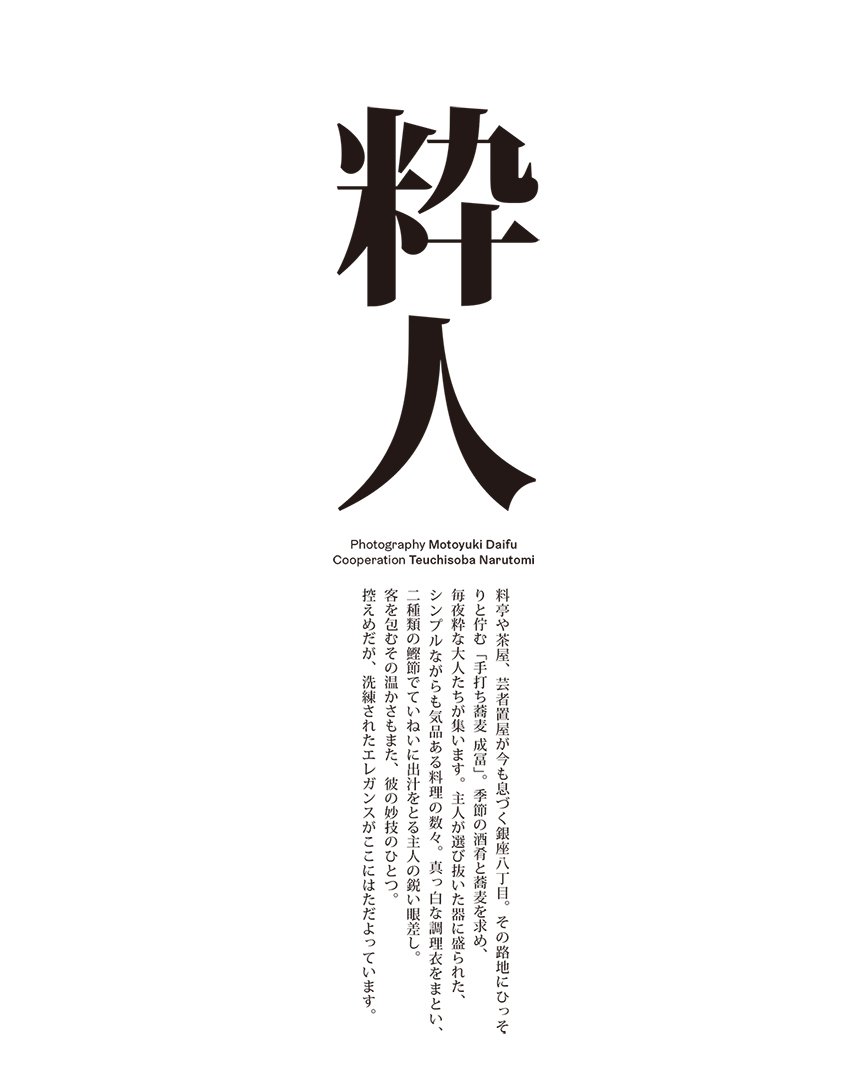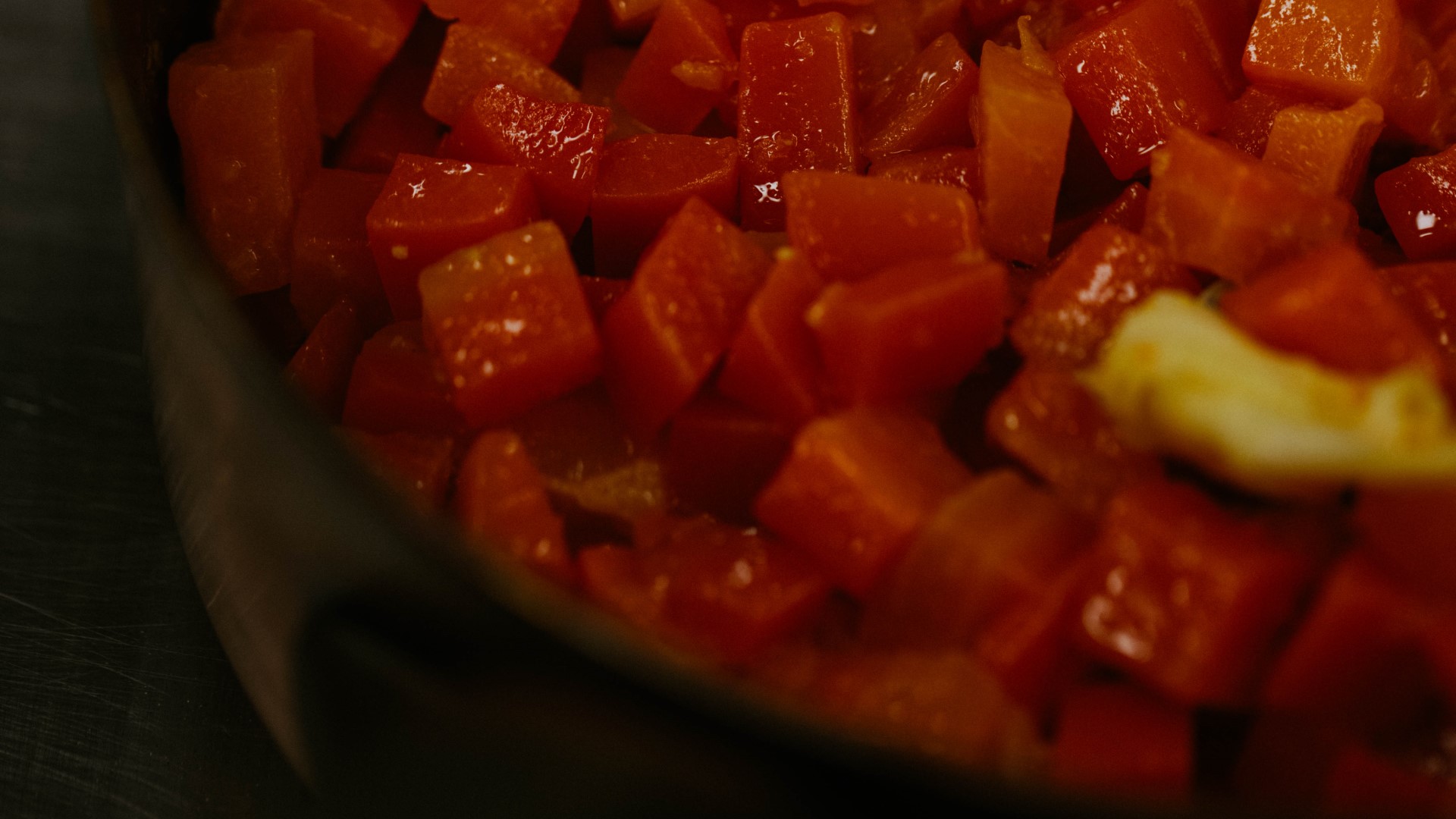
銀座・メモワール #3 オリヴィエ・シェニョン・前篇「料理を味わうためのホスピタリティ」
文/平岩壮悟
写真/ナタリー・カンタクシーノ
通訳/田村友子(L’OSIER)
2024.10.17
銀座――この魅力的な街は、多くの人々にとって、特別な瞬間や記憶に残る場所となっています。親に手を引かれて足を踏み入れたデパート、マスターのこだわりを感じる喫茶店、初デートで訪れたレストラン。どれもが、この街の独特の雰囲気と結びついています。
連載「銀座・メモワール」では、森岡書店代表、森岡督行さんがナビゲーターとして登場します。多様なゲストが織りなす銀座の豊かな物語を共有し、銀座の多面性とその普遍的な魅力に焦点を当てます。連載を通じて、銀座の隠れた魅力と多彩なストーリーに触れ、新たな価値を一緒に発見しましょう。

連載3回目のゲストは銀座の老舗フレンチレストラン「L’OSIER(以下、ロオジエ)」のエグゼクティブシェフ、オリヴィエ・シェニョンさんです。今年で創業51年目を迎えるロオジエは日本における本格フランス料理店のパイオニア的な存在として知られています。『ミシュランガイド東京』では2018年から6年連続“三つ星”を獲得していますが、シェニョンさんはその立役者です。
店の伝統とフランス料理の本質を守りながらも、革新的な表現力で常に新しい“ロオジエの味”を創造しているシェニョンさんの姿勢は、どこか銀座の街のありようにも重なります。
ロオジエでエグゼクティブシェフを務めて11年。シェニョンさんの仕事は料理だけにとどまりません。近年は、世界中の農家と共に、微生物の働きによって土壌改良を行いながら野菜や果物を栽培する「マイクロバイオーム農法」に取り組んでいるそうです。
最良の食材を求めて、国内外の生産地を巡っているシェニョンさんの目に、銀座はどのように映っているのか。また、なぜ生産者と共に有機農法に取り組むのか。
現代におけるシェフの役割を知るべく、開店前の準備で静かな熱気に包まれるロオジエを訪ねました。
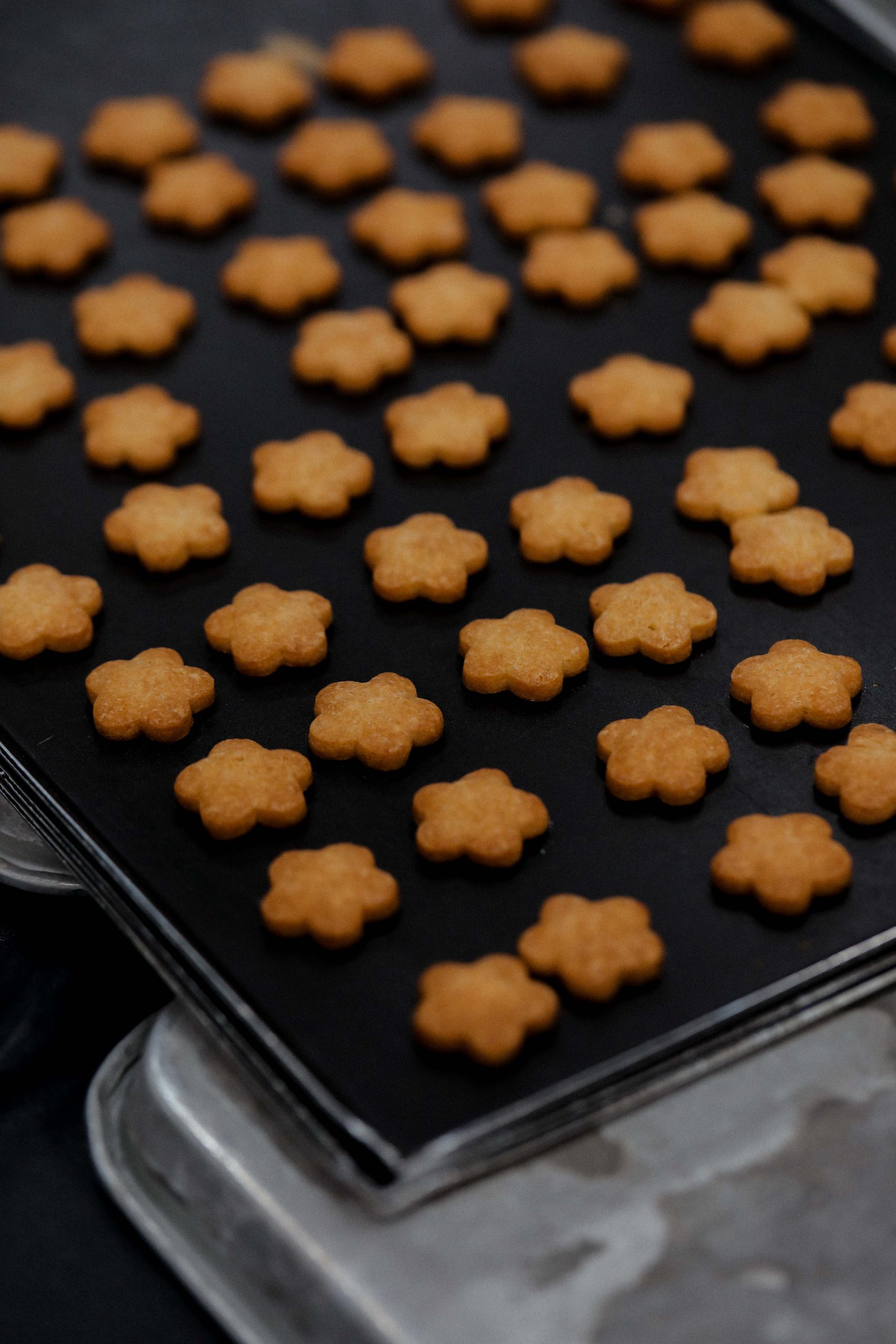

銀座はレストランが豊富な、日本の“モンテーニュ通り”
森岡 ロオジエでエグゼクティブシェフに就任されてから11年。銀座にはどのような印象をお持ちですか?
シェニョン 初めて来たときは、日本のモンテーニュ通りだなと思いました。パリのモンテーニュ通りは、シャンゼリゼ通りから横に入ったところにある、ハイブランドの高級店が並ぶ通りです。
森岡 シャンゼリゼとも雰囲気は違うんですか?
シェニョン シャンゼリゼにはフランチャイズの飲食店もありますが、モンテーニュ通りには高級店しかありません。ただ、銀座はモンテーニュ通りと違って、レストランが多いですね。それから、東京の中心にしては静かだという印象があります。中央通りはいつも人出がありますが、並木通りなど一本入るとすごく静かです。古い建物もたくさん残っていますし。
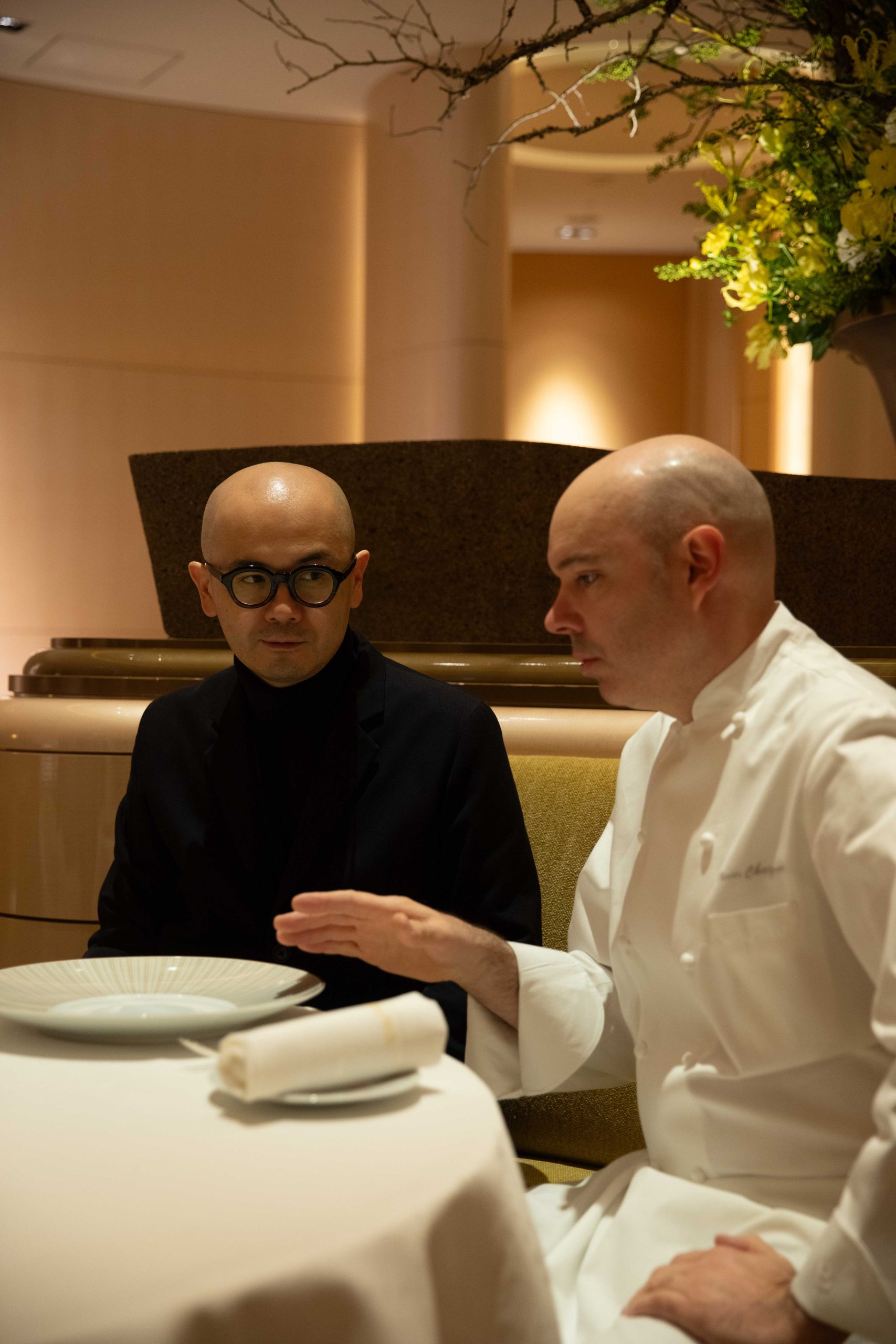
森岡 銀座に行きつけのご飯屋さんとかはあったりされますか?
シェニョン 常連と言えるほどのお店はありません。どちらかというと、いろんな国やスタイルのお店を試してみたい。例えば、日本食やインド料理、カンボジア料理、なんでも好きです。GINZA SIXの近くに美味しい韓国料理店があったのですが、数年前に閉まってしまいました。
森岡 銀座はフレンチやイタリアンだけでなくて、寿司、天ぷらなど飲食店が充実しています。シェニョンさんから見て、和食の職人たちはどのように映っているんでしょうか?
シェニョン 同じ食材を使っていながら僕らとは全く違う料理をつくり上げるのが、いつも面白いなと思っています。魚の切り方やスパイスの使い方ひとつ取っても、国や地域ごとに地元の食材を生かす技術と工夫がある。料理のバリエーションはその地域の食材の豊さを伝えていると思います。天ぷらは個人的にも好きですね。「てんぷら近藤」には度々伺います。
森岡 近藤さんは、天ぷらを揚げ物ではなく、「蒸し物」だと言っていますよね。
シェニョン ええ、蒸気で衣のなかの食材に熱を入れている、という話を聞いたことがあります。銀座に話を戻せば、いろんな国のレストランの存在がこの街の魅力につながっていると感じます。多様性がなければ、お客さんにとってもつまらない街になるのではないでしょうか。
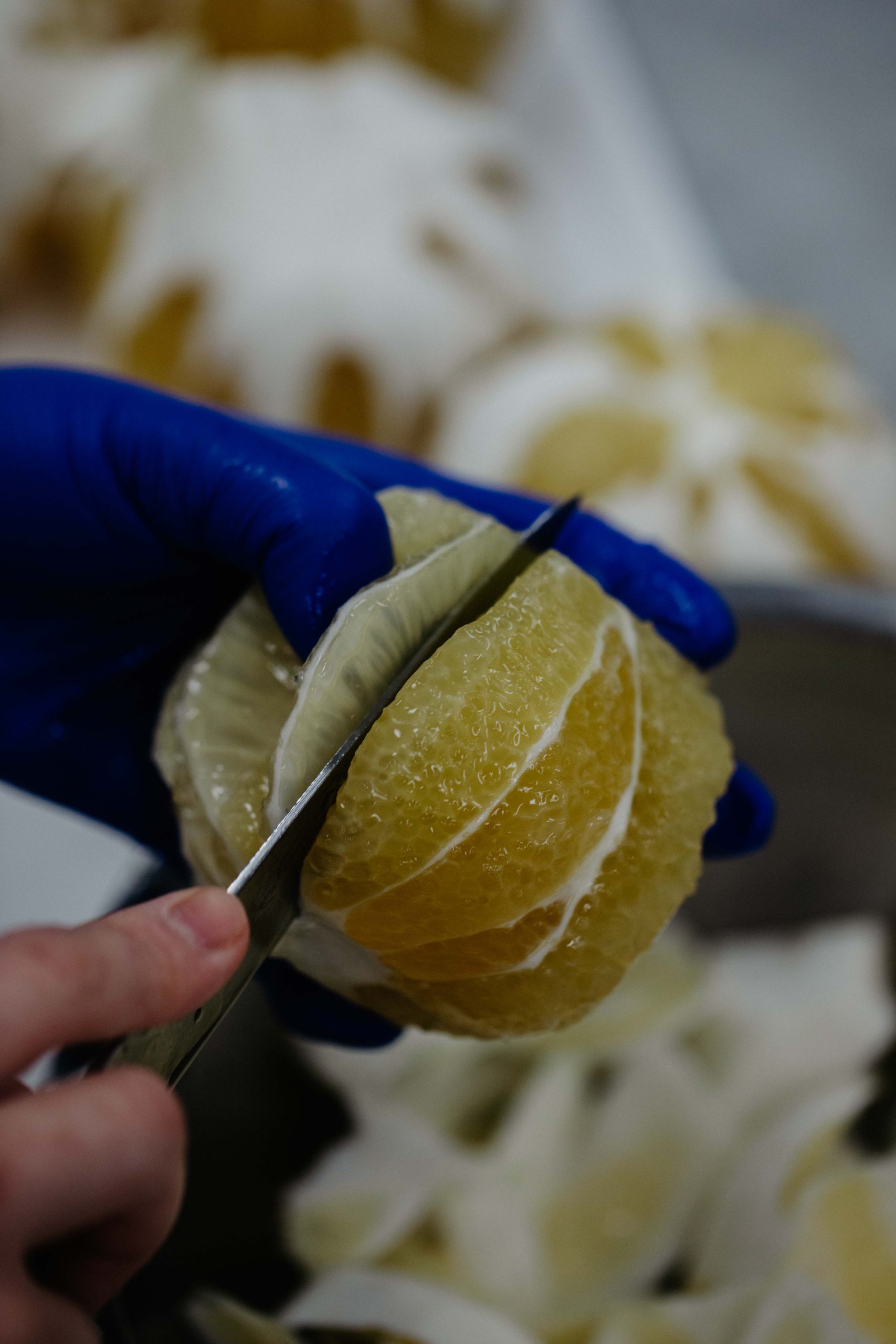
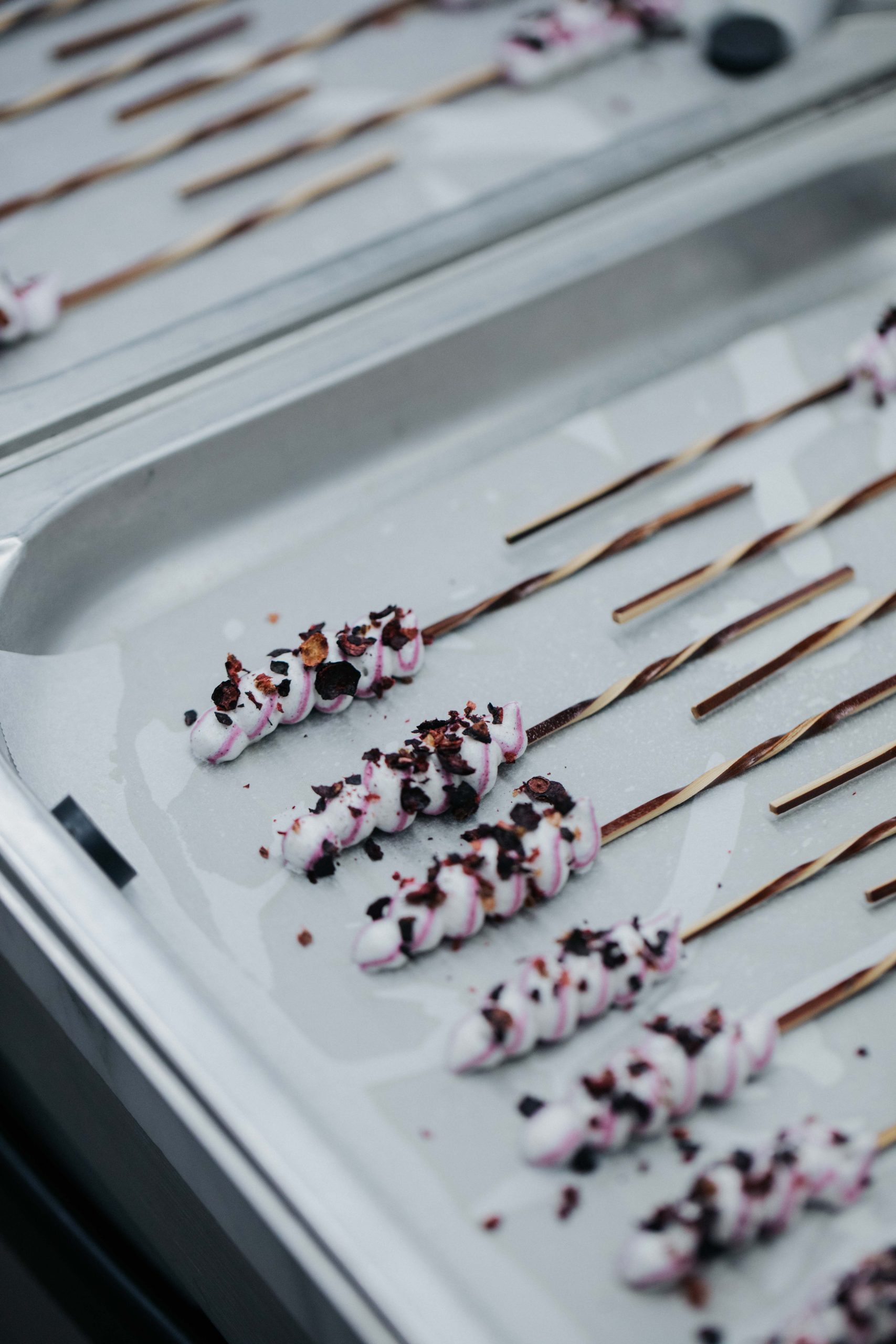
微生物で有機農業を可能にする「マイクロバイオーム農法」という提案
森岡 ロオジエには何度か行かせてもらっているのですが、行くたびに劇場みたいだと感じます。五感すべてに訴えかけてくる総合芸術と言いますか。
シェニョン レストランは“トータルな体験”です。お客さんの体験はまず予約を取るところから始まります。電話に出たレセプショニストの対応、来店時のお出迎え、エントランスの空間、ソムリエからのワインの説明。料理を食べ始める前にも、いくつものステップがある。料理を食べるのはほんの数分にすぎません。ですが、料理に集中してもらうためには、お客さんにくつろいでいただく必要がある。ですから、料理が運ばれてくるまでの時間や環境が大切なのです。
森岡 たしかに。
シェニョン 私自身、若い頃に星付きのレストランに行って、とても緊張した経験があります。その場に相応しい人物として振る舞おうと、まわりの視線をプレッシャーに感じるあまり、肝心の料理は味わえませんでした(笑)。居心地がよくて、初めて料理が味わえる。ですから、ホスピタリティはとても重要です。料理に季節感を取り入れたり、ソースとの兼ね合いを考えたりと料理にこだわるのはもちろんですが、レストランはトータルな体験ですから、隅々まで手は抜けません。おっしゃるとおりレストランは劇場に似ていると思います。3時間ずっと座り心地のわるい椅子に座らされたら、演技に集中できません。それと同じです。たかがディテール、されどディテール。細部が積み重なっていくことで、そのお店の本質が見えるのです。

森岡 シェニョンさんは、微生物やその代謝物の働きによって土壌改良を行いながら野菜を栽培する「マイクロバイオーム農法」を提唱し、国内の生産者と共に生産実験をされています。どういった経緯で始められたんでしょうか?
シェニョン フランス人生物博士のベジット・イディアスとの出会いがきっかけでした。私の手にいる微生物を調べさせてほしいと、ある日、彼がレストランに現れました。優れた寿司職人の手にはよい微生物がいるようで、それなら三つ星レストランのシェフはどうだろうかと調べていたのです。彼の研究内容はとても興味深いもので、スペインのアリカンテで樹齢1000年のオリーブの木から発見された菌と、長寿の人が体内に持つ菌が類似しているというのです。
森岡 すごい話ですね。
シェニョン さらに、彼は菌のポテンシャルを見出し、菌を用いた土壌改良についての研究も行っていました。例えば、樹齢1000年のオリーブの木のまわりにアーモンドなど他の木を植えると、オリーブの木が持つ菌が土壌を通じて、まわりの木にも非常によい影響を与えるという実験結果があります。つまり、よい菌を移植すれば、微生物同士の健全なエコシステムが醸成され、農薬や化学肥料を使わなくても、土壌が豊かになり、野菜や動物自体が強くなるということです。これは有機農法の枠を超えたもので、健康や持続可能性を考えるうえで重要なアプローチだと感じました。それで興味を持ち、国内外の生産者にマイクロバイオーム農法を提案するようになりました。
森岡 具体的にはどんな取り組みをされているのでしょうか?
シェニョン 最初は長崎のニンジン畑で実験を行ったのですが、冬に差が出ました。マイクロバイオーム農法で育てたニンジンは寒さに強くなったのです。沖縄のさとうきび畑や宮崎のカカオ農園でも同じような取り組みが進んでいます。佐賀では養鶏にマイクロバイオームを与える実験をしていたり。鶏の餌にマイクロバイオームを含ませると鶏の死亡率が低くなるという研究結果も出ています。
森岡 生産者からの反応はどうですか?
シェニョン とても好評です。はじめは私たちから提案していたのですが、自分たちもやりたいと積極的に手を挙げてくれるようになりました。モチベーションが高い人たちが集まっているので、今後はより広い範囲で変化を起こせるだろうと希望を持っています。
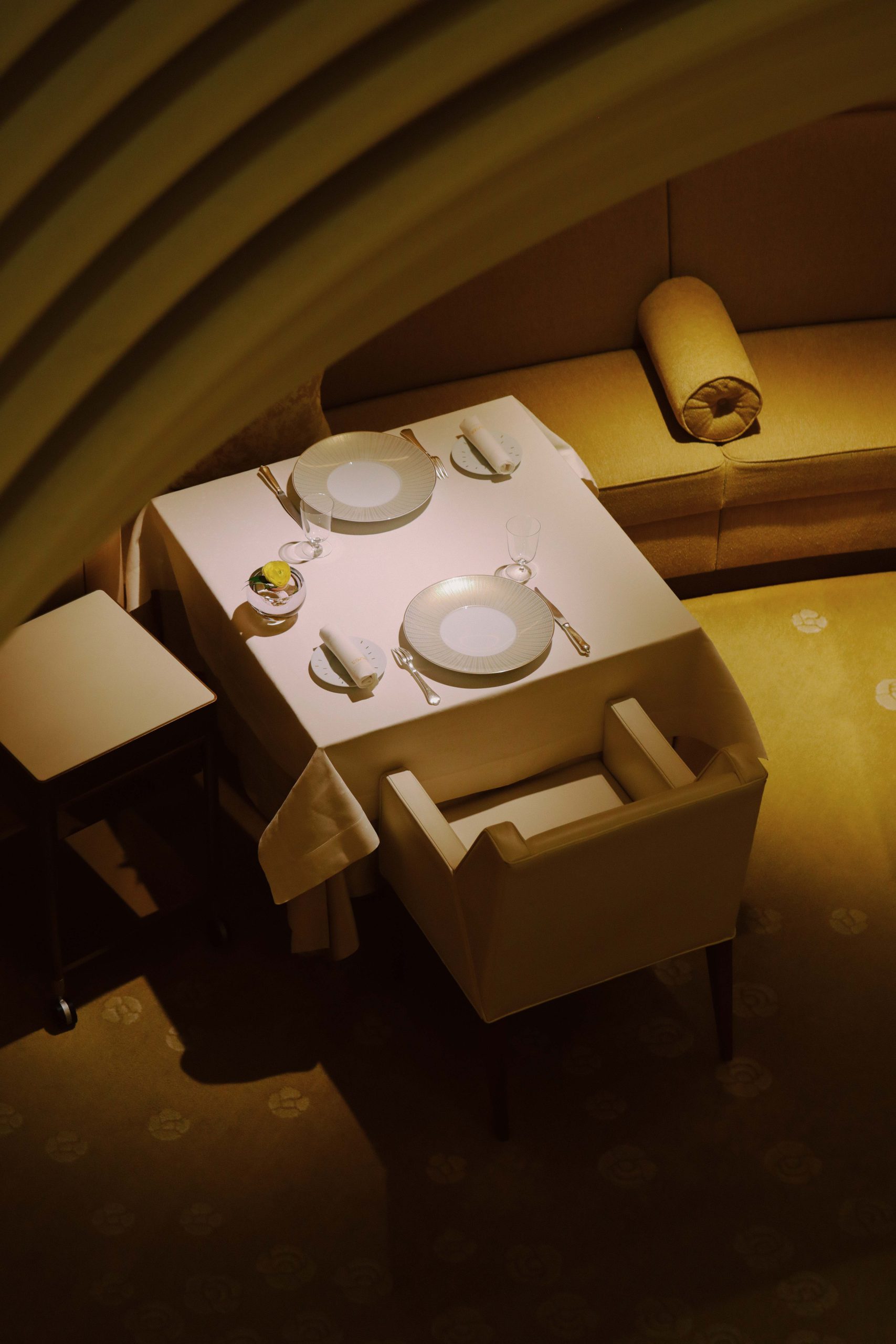
オリヴィエ・シェニョン
日本とフランスの最高の食材をセレクトし、独自の感性による新たなコンビネーションを生かした繊細な味とテクスチャーがオリヴィエ・シェニョンならではの絶妙なハーモニーを生み出している。
「タイユヴァン」、「ピエール・ガニェ―ル」のパリ本店などで経験を積み、2005年「ピエール・ガニェール・ア・東京」の総料理長として来日。2013年「ロオジエ」のエグゼクティブシェフに就任。『ミシュランガイド東京2015~2018』では二つ星、『ゴ・エ・ミヨ東京2017』において「今年のシェフ賞」受賞、『ミシュランガイド東京2019』より6年連続で三つ星を獲得。
https://losier.shiseido.co.jp/森岡督行
1974年山形県生まれ。森岡書店代表。文筆家。『800日間銀座一周』(文春文庫)、『ショートケーキを許す』(雷鳥社)など著書多数。
キュレーターとしても活動し、聖心女子大学と共同した展示シリーズの第二期となる「子どもと放射線」を、2023年10月30日から2024年4月22日まで開催する。
https://www.instagram.com/moriokashoten/?hl=ja平岩壮悟
編集者/ライター
1990年、岐阜県高山市生まれ。フリーランス編集/ライターとして文芸誌、カルチャー誌、ファッション誌に寄稿するほか、オクテイヴィア・E・バトラー『血を分けた子ども』(藤井光訳、河出書房新社)をはじめとした書籍の企画・編集に携わる。訳書にヴァージル・アブロー『ダイアローグ』(アダチプレス)。
https://www.instagram.com/sogohiraiwa/ナタリー・カンタクシーノ
フォトグラファー
スウェーデン・ストックホルム出身のフォトグラファー。東京で日本文化や写真技術を学び、ファッションからドキュメンタリー、ライフスタイルのジャンルで活躍。
https://www.instagram.com/nanorie/
Ginza Memoir #3 Olivier Chaignon, Part 1 “Hospitality Completes the Cuisine”
2024.10.17
Text/Sogo Hiraiwa
Photography/Nathalie Cantacuzino
Translation/Tomoko Tamura(L'OSIER)
Ginza is a fascinating town, frequently linked with special moments and fond memories. Visits to department stores while holding tightly to a parent’s hand, afternoons in old-fashioned cafés run by one-of-a-kind characters, first dates in special restaurants . . . Ginza is a place like no other.
Hanatsubaki’s “Ginza Memoir” series, hosted by Yoshiyuki Morioka of the iconic Morioka Shoten bookstore, explores the multifaceted nature and universal appeal of Ginza through interviews with guests from a wide variety of fields. With Morioka as guide to Ginza’s hidden charms and diverse narratives, new discoveries await around every corner.
Our third guest for “Ginza Memoir” is Olivier Chaignon, executive chef of French restaurant and Ginza institution L’Osier. L’Osier is renowned for its pioneering role as a French restaurant in Japan, and celebrated its fiftieth anniversary last year. With Chaignon at the helm, it has maintained its three-star rating in the Tokyo Michelin Guide for six years running since 2018.
Chaignon’s ability to preserve restaurant tradition and the essence of French cuisine while constantly creating innovative and expressive new “flavours of L’Osier” is perfectly in step with the nature of Ginza. He has been executive chef of L’Osier for eleven years now, but his work extends far beyond the kitchen. In recent years, he has become an advocate for microbiome farming, working with farmers around the globe to cultivate fruits and vegetables while improving the soil through the power of microorganisms.
What drives Chaignon’s commitment to organic farming? How does Ginza look through the eyes of an executive chef who visits primary producers across Japan and around the world in search of the finest ingredients? We visited L’Osier one morning before opening time to find out, speaking to Chaignon amid the quiet, urgent hum of preparation about the role of a modern chef.
Ginza Is Japan’s “Avenue Montaigne”—With More Restaurants
Morioka: You have been executive chef of L’Osier for eleven years now. Can you describe your impressions of Ginza as a place?
Chaignon: On my first visit, I thought, This is Japan’s Avenue Montaigne. The original Avenue Montaigne is a street lined with luxury brand stores just off the Champs-Élysées in Paris.
Morioka: Is the atmosphere there different from the Champs-Élysées itself?
Chaignon: The Champs-Élysées has some franchise restaurants as well, but Avenue Montaigne has only luxury stores. One area where Ginza differs is that it has restaurants, too. Ginza also struck me as very quiet for central Tokyo. There are always people on Chuo-dori Street, but if you stroll across to Namiki-dori or somewhere, things are quieter. There are also many old buildings still standing.
Morioka: Are there any restaurants in Ginza you visit regularly?
Chaignon: Not to the point that I could claim to be a “regular” at any. If anything, I prefer to keep trying different national cuisines and culinary styles. I like Japanese food, Indian food, Cambodian food—anything, really! There used to be a wonderful Korean restaurant near Ginza Six, but it closed a few years ago.
Morioka: As well as French and Italian restaurants, Ginza has many Japanese restaurants that specialize in everything from sushi to tempura. How do Japanese culinary artisans look from your perspective?
Chaignon: I am fascinated by the way they use the same ingredients to create a completely different cuisine from us. Each country or region has its own tricks and techniques for using local ingredients, right down to the way fish are cut or spices are added. I feel that variation in cuisine conveys the richness of the ingredients in that area. I also enjoy tempura on a personal level. I frequently eat at Tempura Kondo.
Morioka: As I recall, Chef Kondo says that tempura is a steamed dish, not a fried one.
Chaignon: Yes, I’ve heard that the steam inside the batter is what cooks the contents. To return to the topic of Ginza, I think that the presence of restaurants from many different countries is part of what gives the neighbourhood its appeal. An area without diversity would be rather dull for visitors, too.
Microbiome Farming: Microbes That Make Organic Farming Possible
Morioka: I’ve dined at L’Osier on many occasions, and every time I go it reminds me of a theatre. It feels like a “total art of art,” appealing to all five senses.
Chaignon: A restaurant is a total experience, yes. The guest’s experience begins when they make the reservation. Their conversation with the receptionist on the phone, the welcome they receive when they arrive, the entranceway itself, their interactions with the sommelier—there are so many steps before the food even arrives. The actual eating is over in minutes, but if we want guests to concentrate on their meal, we must help them feel at home. The time they spend anticipating their meal and the environment they spend those moments in are very important.
Morioka: Very true.
Chaignon: I remember how nervous I was visiting a starred restaurant in my youth. I was so determined to act like I belonged there, and so conscious of other people’s eyes on me, that I didn’t taste the food at all! You have to be comfortable to enjoy good food. This is what makes hospitality so important. Naturally, we try to bring seasonality to the menu, consider which combination of sauces to use, and so on, but a restaurant is a total experience, so attention must be paid to every detail. It is like a theatre, as you say. If you sat in an uncomfortable seat for three hours, you could not concentrate on the performance. The same is true of dining. Mere details, some might say—but details are everything. The accumulation of detail reveals the essence of a restaurant.
Morioka: You are an advocate for “microbiome farming,” in which fruits and vegetables are grown while microorganisms and their metabolic action improve the soil. You also work with domestic farmers on production experiments. How did you first become interested in this topic?
Chaignon: My meeting with French biologist Bejit Ideas was where it all began. He came to visit my restaurant one day to ask if he could analyse the microorganisms on my hands. It seems that the greatest sushi chefs have beneficial microorganisms on their hands, and he wanted to see if the same was true of the chef at a three-star restaurant. I found his research fascinating. For example, he discovered similarities between the microorganisms on a thousand-year-old olive tree in Alicante, Spain, and the internal biomes of long-lived human beings.
Morioka: That’s remarkable.
Chaignon: He was also researching the potential of using microorganisms to improve soil. Experiments have shown that when almond and other trees are planted around thousand-year-old olive trees, the microorganisms on the olive tree have a highly beneficial effect on the new trees via the soil. In other words, transplanting beneficial microorganisms allows a healthy microorganism ecosystem to develop, enriching the soil without the use of agrichemicals or chemical fertilizer, and strengthening the flora and fauna. This struck me as an approach that goes beyond organic farming, with important lessons for health and sustainability. That sparked my interest, and I began spreading the word about microbiome farming to producers in Japan and around the world.
Morioka: Can you tell us about any specific initiatives?
Chaignon: We began with an experiment in a carrot field in Nagasaki, where results became apparent once winter arrived: carrots grown using microbiome farming were more resistant to the cold. Similar projects are now underway at a sugarcane field in Okinawa and a cacao plantation in Miyazaki. In Saga, we are experimenting with feeding microbiomes to poultry. Research has found that including microbiomes in chicken feed can reduce mortality among the birds.
Morioka: What has the response from the producers been like?
Chaignon: Very positive. At first, we were the ones proposing projects, but now farmers are actively putting their hands up to volunteer. Many highly motivated people are involved at this point, so I hope that we will be able to effect change on a broader scale going forward.
Olivier Chaignon
Olivier Chaignon selects the finest ingredients from France and Japan and combines them in new ways to create delicate flavours and textures that expressing his unique sensibility through sublime harmony. After working at Taillevent and Pierre Gagnaire in Paris, Chaignon came to Japan in 2005 as executive chef of Pierre Gagnaire a Tokyo. In 2013, he joined L’Osier as executive chef. From 2015 to 2018, L’Osier received two stars in the Tokyo Michelin Guide. In Gault & Millau Tokyo 2017, Chaignon won the Chef of the Year award. In the 2019 edition of the Tokyo Michelin Guide, L’Osier received three stars, and it has retained that rating for six years running—so far.
https://losier.shiseido.co.jp/Yoshiyuki Morioka
Born 1974 in Yamagata. Head of the Morioka Shoten bookstore. Writer. Published books include Around Ginza in 800 Days (Bunshun Bunko) and Forgiving the Shortcake (Raichosha). Also active as an art curator, with recent shows including Children and Radiation, the second stage of an exhibition held jointly with the University of the Sacred Heart (October 30, 2003–April 22, 2024).
https://www.instagram.com/moriokashoten/?hl=jaSogo Hiraiwa
Editor/writer
Born 1990 in Takayama, Gifu. Freelance editor and writer contributing regularly to literary, cultural, and fashion magazines. Also involved in planning and editing books, including the Japanese edition of Octavia E. Butler’s Bloodchild and Other Stories (trans. Hikaru Fujii). Translator of Virgil Abloh’s Dialogues (Adachi Press).
https://www.instagram.com/sogohiraiwa/Nathalie Cantacuzino
Photographer
Born in Stockholm, Sweden. Studied Japanese culture and photographic technique in Tokyo. Shoots in genres ranging from fashion to documentary and lifestyle.
https://www.instagram.com/nanorie/

